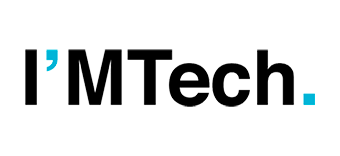New Search
If you are not happy with the results below please do another search
223 search results for: health
Encrypting and watermarking health data to protect it
As medicine and genetics make increasing use of data science and AI, the question of how to protect this sensitive information is becoming increasingly important to all those involved in health. A team from the LaTIM laboratory is working on these issues, with solutions such as encryption and watermarking. It has just been accredited by […]
How can we assess the health risks associated with exposure to electromagnetic fields?
As partners of the European SEAWave project, Télécom Paris and the C2M Chair are developing innovative measurement techniques to respond to public concern about the possible effects of cell phone usage. Funded by the EU to the tune of €8 million, the project will be launched in June 2022 for a period of 3 years. Interview […]
Speaking the language of health data to improve its use
The world of healthcare has extensive databases that are just waiting to be used. This is one of the issues Benjamin Dalmas, a data science researcher at Mines Saint-Étienne, is exploring in his work. His main objective is to understand the origin of this data to use it more effectively. As such, he is working […]
Innovation in health: towards responsibility
Digital innovations are paving the way for more accurate predictive medicine and a more resilient healthcare system. In order to establish themselves on the market and reduce their potential negative effects, these technologies must be responsible. Christine Balagué, a researcher in digital ethics at Institut Mines-Télécom Business School, presents the risks associated with innovations in […]
Health crisis, state of emergency: what safeguards are there for our fundamental freedoms?
This article originally appeared (in French) in newsletter no. 17 of the VP-IP Chair, Data, Identity, Trust in the Digital Age for April 2020. [divider style=”dotted” top=”20″ bottom=”20″] The current pandemic and unprecedented measures taken to slow its spread provide an opportunity to measure and assess the impact of digital technology on our societies, including […]
When engineering helps improve healthcare
Editorial. Tomorrow’s medicine will be at least 4P: personalized, preventive, predictive, participative. ‘At least,’ because some would readily add “precise,” “proof” (evidence-based), “pathway-based” etc. Beyond naming this type of medicine and determining the correct number of Ps, medicine is clearly undergoing a profound change. A transformation supported in part by engineering, which is bringing […]
When healthcare professionals form communities through digital technology
Digital technology is shaking up the healthcare world. Among its other uses, it can help break isolation and facilitate online interactions in both the private and professional spheres. Can these virtual interactions help form a collective structure and community for individuals whose occupations involve isolation and distance from their peers? Nicolas Jullien, a researcher in […]
Digital twins in the health sector: mirage or reality?
Digital twins, which are already well established in industry, are becoming increasingly present in the health sector. There is a wide range of potential applications for both diagnosis and treatment, but the technology is mostly still in the research phase. The health sector is currently undergoing digital transition with a view to developing “4P” […]
Ethical algorithms in health: a technological and societal challenge
The possibilities offered by algorithms and artificial intelligence in the healthcare field raise many questions. What risks do they pose? How can we ensure that they have a positive impact on the patient as an individual? What safeguards can be put in place to ensure that the values of our healthcare system are respected? […]

